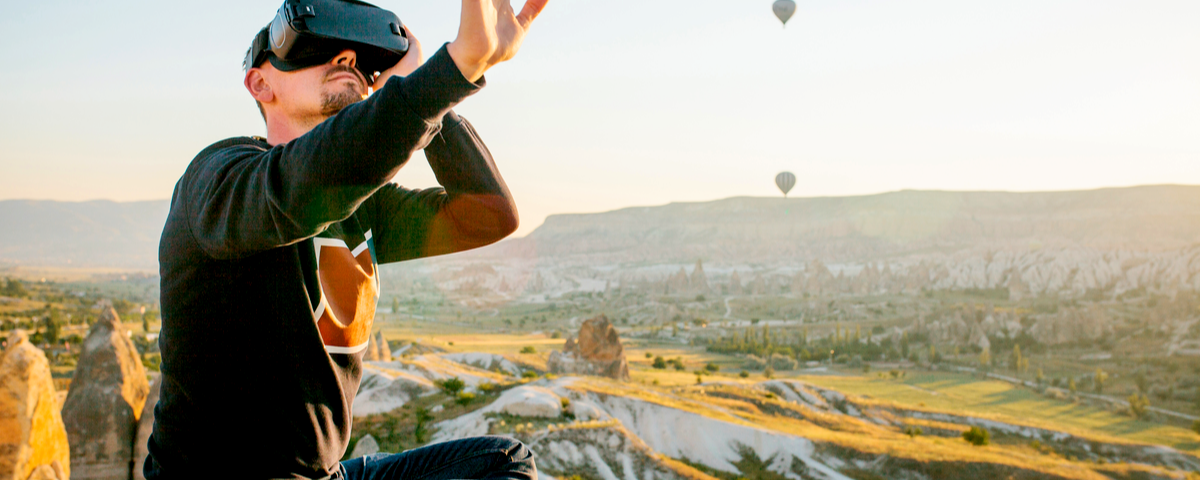By Marta Poggi
We live in the era of digital transformation in various economic sectors and it’s no different in tourism. The businesspeople and managers of tour companies deal on a daily basis with many challenges, especially with regard to decision making.
Well aware of the importance of the digital presence of brands, of the experience they offer customers and of process and service digitisation, it’s up to them to decide on which technology, or technologies, they place their bets. There are a lot of options available to them, from the use of intelligent digital marketing tools, data analysis, voice command and blockchain to artificial intelligence.
Below I list five technologies that can be used for developing tour companies in 2020:
- Personalization
According to a survey that was recently published by Booking.com on trends for 2020, 59% of travellers want technology to surprise them with original and personalized options, both before and during their trip. Users are willing to share their information as long as it is used to send customized offers.
In 2020, therefore, more apps and websites are likely to be created that use artificial intelligence for suggesting destinations, hotels, activities and experiences according to the preferences of the user and the trips they’ve already taken.
- Data analysis
Everything we do (consciously or otherwise) leaves a trail. In addition to our Google searches and interactions on social networks, our preferences on streaming platforms such as Netflix and Spotify, our purchases and even our offline conversations when we’re close to our smartphones generate data. Big Data is the oil of the digital age. Knowing how to collect and, above all, how to analyse data is key to any business.
Small Data, which focuses on qualitative information, is also very relevant. It’s data related to customer perceptions, opinions and experiences.
We can also work with the data we already have, such as website traffic, social media campaigns, surveys, and others. The fact is that without data any decision making is an extremely weak process.
- Voice command
The use of voice to search for and book hotels, flights and tourist activities is seen as the next major disruption in tourism. In Europe and the United States it’s already possible to book a hotel (and also a restaurant) in two minutes using voice, by way of Google Assistant.
There are studies indicating that voice command will be used in 50% of all searches in the next two years. As digital natives (especially generations Y and Z) become accustomed to this technology, companies will be forced to get into the game. Understanding how to adapt websites and their content to accommodate voice searches is key to being found and chosen on Google.
- Chatbots
More and more frequent in tourism companies, such as airlines and hotels, chatbots are used to answer customer questions, facilitate sales or call the potential customer back to carry on with the booking process.
Chatbots are very successful in customer service and booking processes. Numerous hotels have included this option on their website, replacing telephone and email communication with intelligent conversations using text or voice.
As more and more customers are getting used to interacting with robots, which respond 24 hours a day, 7 days a week in these chats, the opportunities for implementing this technology provide important time and cost-saving benefits for hoteliers, in addition to speeding up the booking process.
Bots also help travellers during their stay, with information about the hotel and the destination, so playing the role of a virtual concierge.
Some hotels have implemented chatbots that use voice command to open the curtains, set the alarm clock or call room service.
- Virtual reality
Virtual reality adapts very well to tourism, since it offers a unique immersive experience. Thanks to virtual reality tours, potential customers can explore the destination or the hotel, check out all the facilities on offer and also check nearby services, such as cafes, restaurants and shopping centres.
This technology is especially important for event centres, as it can provide the user with a good “free sample” of their facilities and equipment.
We love to “play” with these technologies when we’re customers. The challenge lies in identifying and, above all, putting these “toys of the future” into use in our companies. We need to think: What’s the best technology for my business? What pleases and surprises my customer?
We know that change happens fast and therefore our analyses and decisions must also move at this new pace. The only way is to follow the trends and look for innovation. Welcome to the year 2020!
The opinions expressed in this text are the author’s opinion and do not necessarily reflect the position of WTM Latin America.


